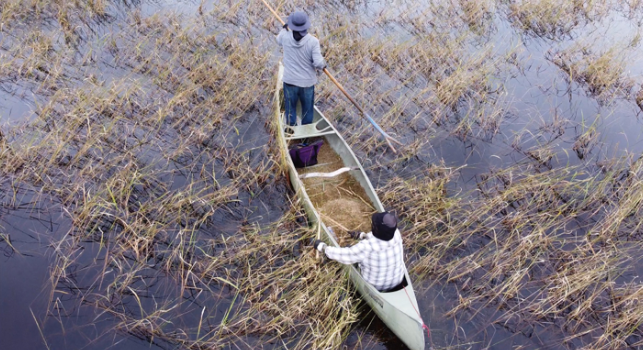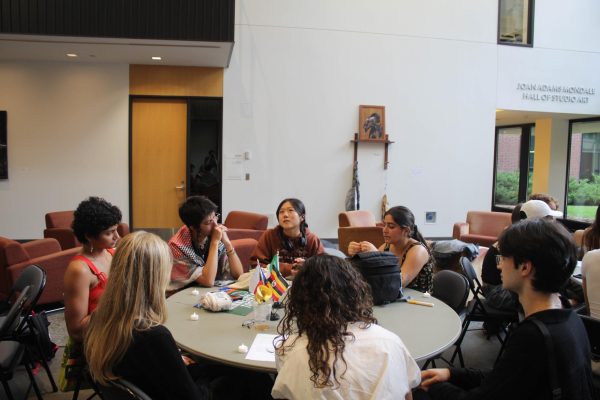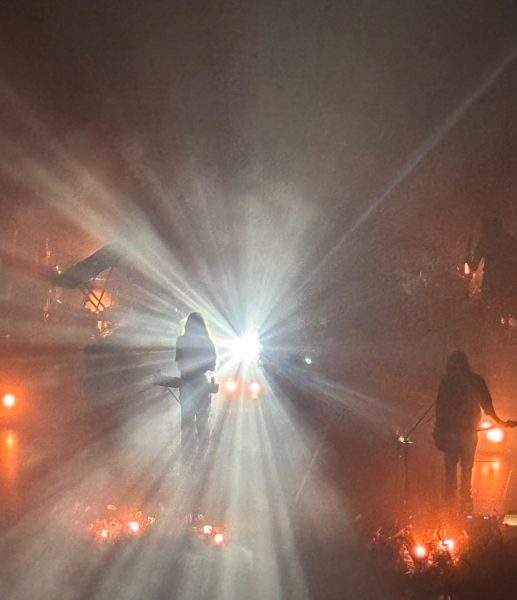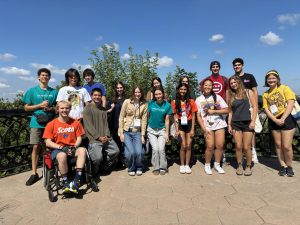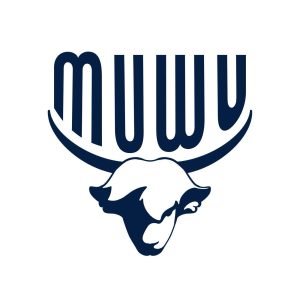Wake up Macalester: Join the Fight to Stop Talon Mine
January 26, 2023
The Stop Line 3 movement called many in the Macalester community to action. We demanded that the Macalester Board of Trustees divest from fossil fuels, marched to the state capitol, and joined Indigenous people on the frontlines in Northern Minnesota. How did Enbridge, the Minnesota government and state police react to Stop Line 3 protests? They violently suppressed Ojibwe treaty rights, brutalizing and arresting water protectors and eventually, they built Line 3.
Was Line 3 stopped? No.
As Winona LaDuke, Native environmental activist and co-founder of Honor the Earth said, “many people woke up” during the Line 3 movement. And the time to wake has come again. Just days after Line 3 construction was finished, a new extractive project was announced: Talon Mine.
Talon Mine, a project by Talon Metals, is a nickel mine planned in Northern Minnesota, a few miles from segments of the Line 3 pipeline. In actuality, Talon Metals is a shell company for mining giant Rio Tinto founded to market and greenwash the nickel mine they plan to build in Tamarack, in Aitkin County, Minn. If you have heard of Rio Tinto, your mind might wander to this story about the company destroying a 46,000 year-old ancient Aboriginal cave system to expand an iron mine, or this one about it sparking a civil war to benefit their copper mine in Papua New Guinea. Rio Tinto knows the unpopularity of announcing, ‘we’re coming to your town next,’ so they use companies like Talon Metals as a front for their operations. Since their inception, Talon has been greenwashing the Talon Mine project to sway public opinion towards support for their nickel mine and circumvent the permitting process. Do not be fooled though: not only is Talon Mine destructive to Indigenous communities and the environment in Aitkin County, but it also is completely unnecessary.
Talon claims they will carefully monitor and minimize the environmental impact of their mine, advertising “green nickel” to paint a rosy picture of their operations. Despite these claims, there has never been a nickel mine that has operated without causing significant environmental destruction. To make matters worse, this mine is planned in a complex wetland environment, where the groundwater has not been studied or mapped, increasing risks to water resources and the health of communities that depend on them. It’s no coincidence that Ojibwe communities are on the frontline of this issue. In fact, 97% of the nickel mining reserves targeted by the U.S. for extraction are located within a 35-mile radius of Native American reservations. Talon Mine is a continuation of the disproportionate mining pollution burden that Native people face in the United States.
In September, I had the privilege of hearing the Ojibwe creation story from Charlotte Loonsfoot, Keweenaw Bay Chippewa tribal member, while attending an educational ricing event in Aitkin County. To paraphrase Charlotte: The Ojibwe, who originally resided in present day New York City, received a message from their Creator that the white race was coming, and they must migrate west “where the food grows on the water.” When they arrived at what is now called the Great Lakes region, they found wild rice, or manoomin, growing on lakes. This manoomin, which is sacred to Ojibwe culture and has sustained Ojibwe communities for generations, is under attack by Talon Mine. If built, Talon Mine will bring cultural genocide to this community.
Talon tries to justify this inevitable destruction by claiming that their nickel will fuel the “just” transition to green energy. This claim is false on three levels. Firstly, there are more efficient ways of cutting transportation emissions than building more cars, electric or otherwise. Investments should be made in public transportation, allowing those who can’t afford pricey electric vehicles (EVs) to traverse all major cities in America. Secondly, even if we do need more EVs to mitigate emissions, nearly half of the largest EV manufacturers’ batteries are made without nickel, and technology in nickel-battery alternatives are rapidly improving. Lastly, if some nickel is needed for EV batteries, we can turn to recycling nickel. According to a recent study by Repowered, a Twin Cities electronics-recycling organization, investments in recycling infrastructure can fulfill all demand for nickel in Minn. Opening nickel mines in Northern Minn. is gratuitous and dangerous, we have solutions that aren’t.
In Oct. 2022, Talon announced that they received a $114 million grant from the U.S. government allocated by the recent “climate” infrastructure bill. We’re up against a $400 million company, backed by a $170 billion company, Rio Tinto and the federal government. But there’s a lot on our side. There are countless brilliant, dedicated organizers working tirelessly to resist Talon Mine. Some of them have been defending their homelands their entire lives and some found their calling during the Stop Line 3 movement. They’re building coalitions with organizations throughout the country and are prepared to stand up against Talon Mine. They need you to stand up too. It’s time to wake up and decide if our “just” transition to green energy will revolve around extractive mining corporations or community led movements.
Learn more about the Stop Talon Mine movement and join us in the Library Harmon Room at 6:30 p.m. on Monday, Feb. 13 for an info session. Also, stay tuned for a storytelling and advocate training event on Saturday, March 25.

